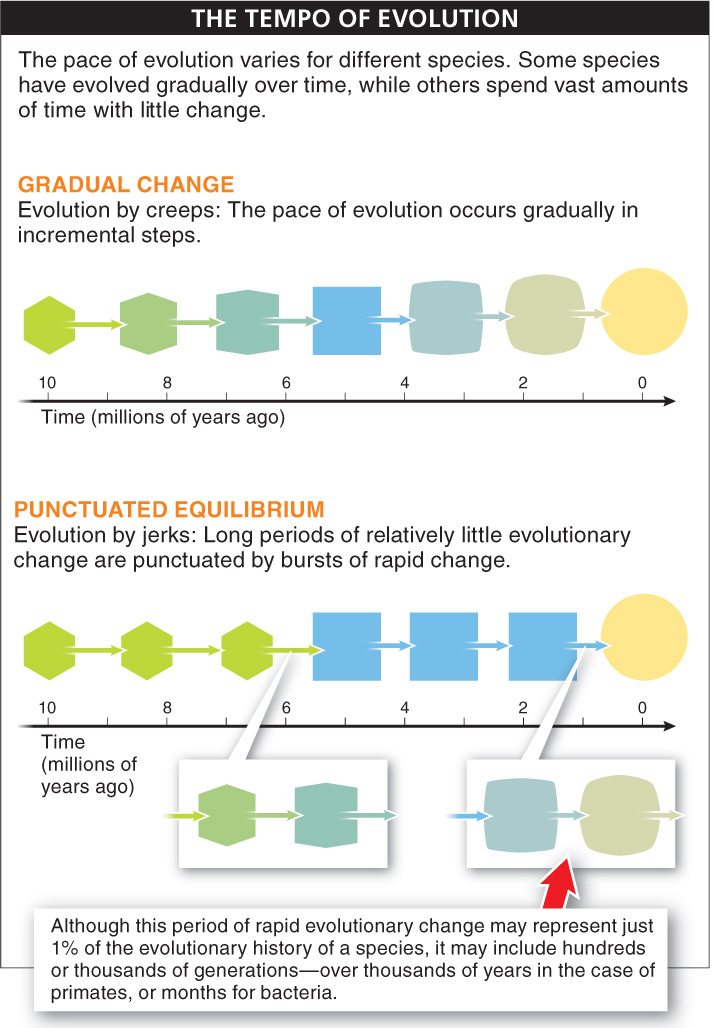If you listened in on some scientists debating their research, you might hear one side describing “evolution by jerks” and the other side making light of “evolution by creeps.” They’re not gearing up for a fight out in the schoolyard. They’re just debating the pace of evolution.
The traditional model of how evolutionary change occurred was that populations changed slowly but surely, gradually accumulating sufficient genetic differences for speciation—

In nature, we can find examples of both gradual change and the irregular pattern of punctuated equilibrium. For many groups of organisms, such as many mollusks and mammals, we see in the fossil record a long period in which particular species seem to go through very little change, followed by the appearance of a large number of newer, but clearly related, species, without seeing any fossils representing the gradual transition between the newer and older fossils. For other groups, such transitional fossils do exist. For example, very complete sets of fossils reveal the transitional sequence from fox-
428
In the end, there is no single rate at which evolution occurs across all species. Some species have spent vast periods of time with little change at all. The coelacanth species of fish, for example, seems to have undergone almost no physical changes over more than 300 million years. Other species have clearly changed gradually, over time, for their entire evolutionary history. For any organism, the rate of evolutionary change depends on the selective forces acting on the population. Strong and directional forces may act over long periods of time and lead to rapid change, while stabilizing selection may lead to very little change.
Darwin foreshadowed the discussion about the pace of evolution in The Origin of Species, writing that “the periods during which species have undergone modification, though long as measured in years, have probably been short in comparison with the periods during which they retain the same form.”
TAKE-HOME MESSAGE 10.12
The pace at which evolution occurs can be rapid or very slow. In some cases, the fossil record reveals long periods with little evolutionary change punctuated by rapid periods of change. In other cases, species may change at a more gradual but consistent pace.
Punctuated equilibrium has been portrayed as a “problem” for evolutionary biology; it has been mistakenly believed that the rapid evolutionary changes of punctuated equilibrium are the result of some new mechanism for evolution. Why is this view incorrect?
Punctuated change can appear to be rapid, but only on a geologic time scale. The per-generation rates of change necessary to produce punctuated change are not above the rates of change that have been measured in evolving populations.